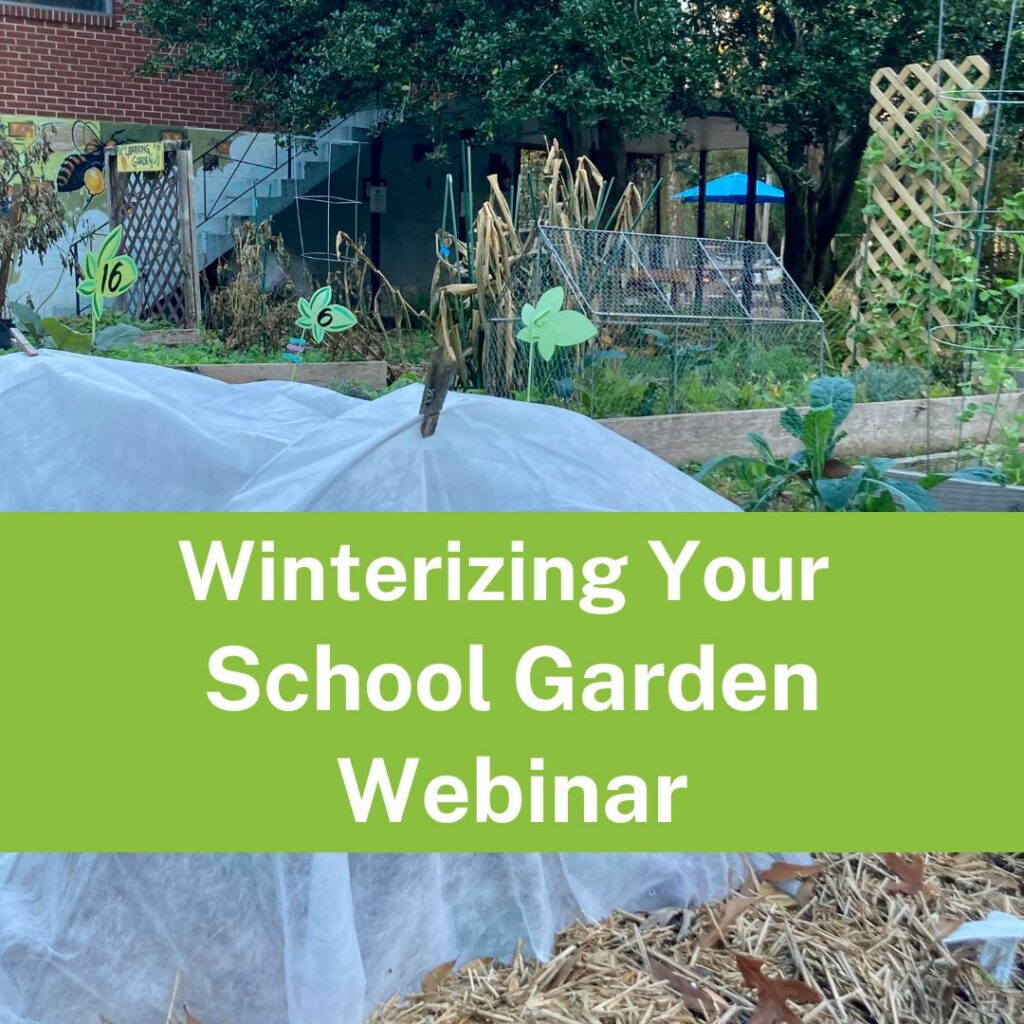By Lily McNulty, Wylde Center Education Team Intern & Graduate Research Assistant at Rollins School of Public Health
Each month Wylde Center’s Education team hosts a virtual “Morning School Garden Club” to discuss relevant gardening topics with school gardeners. Kristy Bible, the Oakhurst Garden Site Coordinator, led us through the steps of preparing your school garden for winter and how to maintain a winter garden in Georgia. Find out more about January’s webinar here.
How do I prepare my garden for cold weather?
- Placing mulch or dried-up, shredded leaves in your beds and around the roots of
your plants can keep them insulated, keeps the moisture in, and prevents weeds
from growing. Tip: this method can be used in the summer months as well! - Some plants have dried flower pods that can be picked off so you can save their
seeds to be planted in the spring – like marigolds! - You can plant garlic in your garden around the Winter Solstice and harvest it at
the Summer Solstice. This involves taking a single clove of garlic (preferably
organic) and planting it in a hole that allows the clove to be covered by about 2
inches of dirt. It’s important to plant the clove with the pointed side up, and the
root (flat) side down. Planting garlic requires little to no maintenance during the
winter months and is fun to plant with students.
Do I need to water over winter break?
- Plants and vegetables only need to be watered when they show signs of needing
water. This means droopy leaves or looking kind of “sad”. They can be watered
once a week if needed. - Plants don’t need that much water in the winter months, especially if you’ve
mulched or placed dry leaves around the roots.
What can I grow in the winter?
- Because we live in Georgia, we can garden year-round. However, it’s important
to plant things that are frost tolerant in the fall and winter months. - Lettuce can withstand temperatures down to the mid-20s Fahrenheit. Similarly,
anything in the Brassica family, like collards, kale, or cabbages, can withstand
temperatures in the teens. Leafy greens are great to plant in the colder months,
and sometimes taste better when they’ve had a cold snap! - Sugar snap peas are another fun thing to plant in the winter – a trellis is needed
for these to grow. - Radishes and carrots are both hearty root vegetables that can be enjoyed all winter
long!
Is it too late to plant?
You can still plant in the cold months! Cover crops are a great, inexpensive way
to fend off weeds and enjoy things from your garden. Take your old winter seeds,
mix them together, and spread them across your bed. These patches of cover
crops are great ways to get you greens, including calendula, Mizuno, lettuces, Bok
choy – whatever you want!

